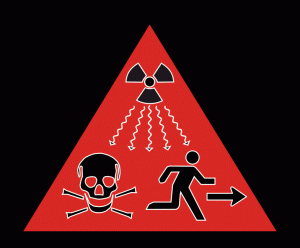
“SRS experienced the three radiological events recently.”
DEFENSE NUCLEAR FACILITIES SAFETY BOARD
February 21, 2020 report
SUBJECT: Savannah River Site Activity Report for Week
Radiological Protection: SRS experienced the three radiological events recently.
• At F/H Laboratory, a subcontractor technical representative (STR) overseeing a roof replacement job (non-radiological work) violated several requirements when he entered the laboratory and went to the control room. The control room can be accessed via a radiological buffer area (RBA) or a contamination area (CA). The STR did not have facility entrance training and did not sign in on the personnel accountability system next to the entrance door. The STR then walked through a RBA and into a CA in his street clothes, without a dosimeter, and without having radiological worker training until he was stopped by the shift operations manager (SOM) The requirements were clearly posted, but the STR believed he was authorized because the SOM had told him to report to the control room
• At the Savannah River National Laboratory, a laboratory specialist needed to place a bottle of potentially contaminated L-Basin water inside a plastic bag while working in a contaminated hood, transfer it to a nearby laboratory, remove the bottle from the bag inside another hood, and then pour the liquid down a High Activity Drain (HAD). When the laboratory specialist arrived at the second laboratory, the specialist cut open the bag and removed the potentially contaminated plastic bottle on a benchtop inside a RBA rather than inside the hood, which was posted as a CA. After the specialist had poured the liquid down the HAD, the laboratory principle investigator (PI) entered the lab and asked about the empty bag on the benchtop. Realizing the error of opening a potentially contaminated bag inside an RBA, the specialist placed the bag in the hood and called a time out. Radiological Protection Department personnel did not find any spread of contamination as a result of this error. Prior to performing this activity, the specialist and PI had held an informal discussion regarding the disposal and hazards present in the hood. During a post-job review, SRNL personnel discussed several areas for improvement including the need to perform a formal pre-job brief and task preview for evolutions like this. It is unclear to the resident inspector why this issue was not investigated via the “Issue Investigation” process under the site conduct of operations manual rather than the post-job review.
• Workers detected fixed and transferrable contamination on a camera after it was removed from the Tank 39 annulus riser, which is not contaminated. Reviews of the past use of the camera and extensive contamination surveys did not definitively identify the source of contamination.